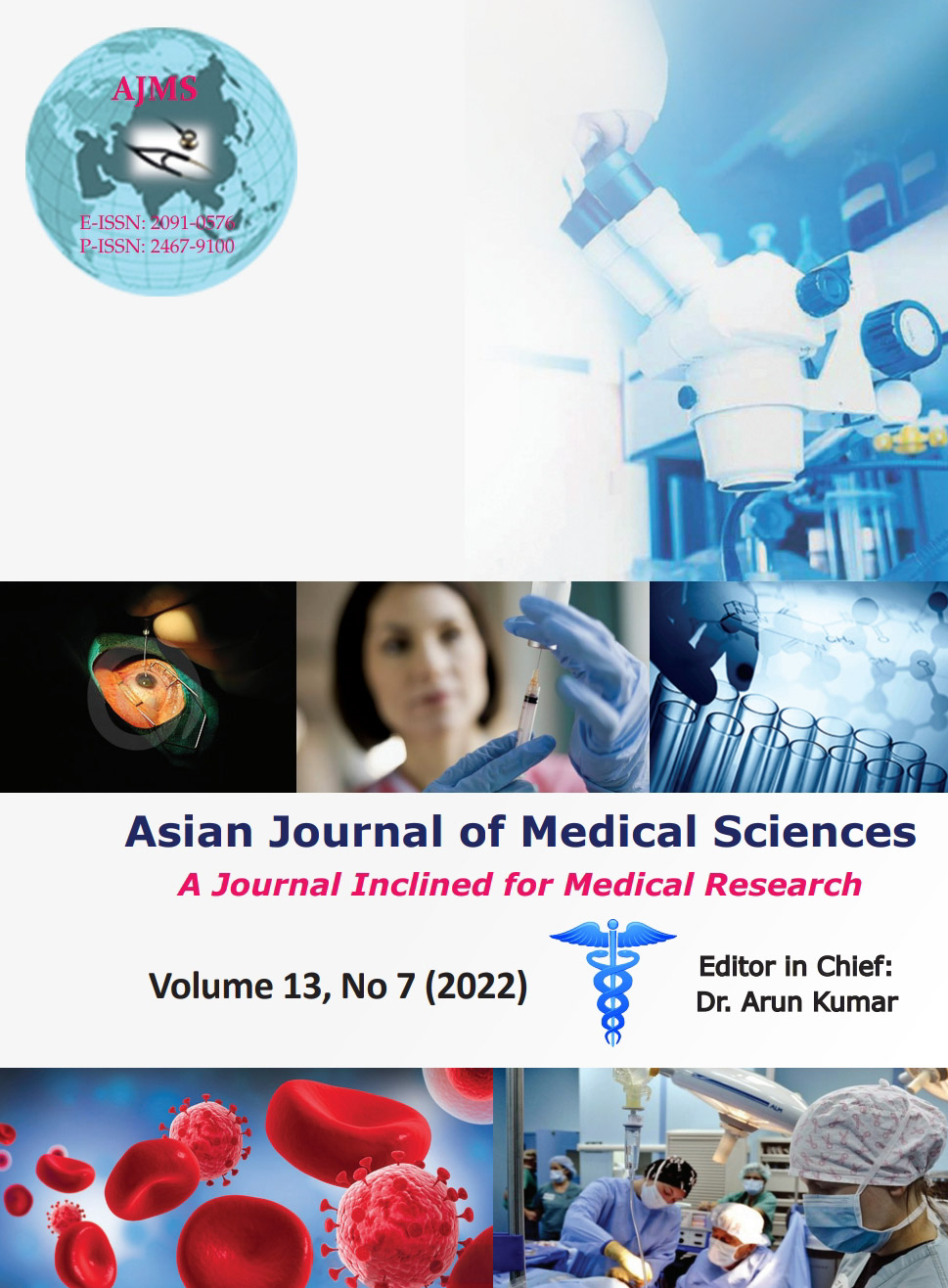A comparative study of mesh fixation with non-absorbable versus delayed-absorbable monofilament suture in Lichtenstein tension-free hernioplasty in a medical college
Keywords:
Hernioplasty, Mesh, SuturesAbstract
Background: Mesh placement and subsequent fixation are an important aspect of hernia surgery. Different methods are available in modern days for fixing the mesh in inguinal hernioplasty surgery in both open and laparoscopic approach. However, sutures are still preferred by most of the surgeons because of its easy availability and cost- effectiveness. Conventionally, non-absorbable sutures are used to fix mesh.
Aims and Objectives: The objective of our present study is to compare the post-surgical outcomes of mesh fixation with monofilament non-absorbable sutures versus monofilament delayed absorbable
sutures.
Materials and Methods: This prospective and randomized study was conducted at the Department of Surgery, ESIC-PGIMSR, Joka during the period of January 2017 –March 2019. Total 160 patients having unilateral uncomplicated inguinal hernia were included in this study; operated by the same surgical team. The patients were divided into two groups, each of 80 patients. In Group I, mesh fixation was done with delayed absorbable sutures whereas, in Group II, mesh was fixed with non-absorbable sutures. The data were analyzed with appropriate statistical tests such as Chi-square test and P < 0.05 that were considered as statistically significant.
Results: The development of post-operative pain was more common in Group II. The difference was statistically significant at 6 months post-operative time (P =0.042). When we compared the post-operative par esthesia in both surgical groups, more number of patients developed it in Group II but no significant statistical difference was observed (P-value came as 0.784, 0,221, and 0.385 after analyzing 3 months, 6 months, and 1 year data, respectively). Regarding other complications such as
h ematoma, wound infection, seroma formation, and scrotal/ cord edema, no statistically significant differences were observed in either group (P-values were 0.339, 0.149, 0.313, and 0.117, respectively). No patient developed chronic discharging sinus post operatively in either group. No recurrence was noted in any patients included in this study, after 1 year of follow- up.
Conclusion: Using delayed-absorbable suture material with air knotting technique for mesh fixation in Lichtenstein tension-free open inguinal hernioplasty causes less chance of post-operative inguinal pain and pare sthesia. Hence, it is a good alternative choice for surgeons; in terms of safety and efficacy.
Downloads
Downloads
Published
How to Cite
Issue
Section
License
Copyright (c) 2022 Asian Journal of Medical Sciences

This work is licensed under a Creative Commons Attribution-NonCommercial 4.0 International License.
Authors who publish with this journal agree to the following terms:
- The journal holds copyright and publishes the work under a Creative Commons CC-BY-NC license that permits use, distribution and reprduction in any medium, provided the original work is properly cited and is not used for commercial purposes. The journal should be recognised as the original publisher of this work.
- Authors are able to enter into separate, additional contractual arrangements for the non-exclusive distribution of the journal's published version of the work (e.g., post it to an institutional repository or publish it in a book), with an acknowledgement of its initial publication in this journal.
- Authors are permitted and encouraged to post their work online (e.g., in institutional repositories or on their website) prior to and during the submission process, as it can lead to productive exchanges, as well as earlier and greater citation of published work (See The Effect of Open Access).




